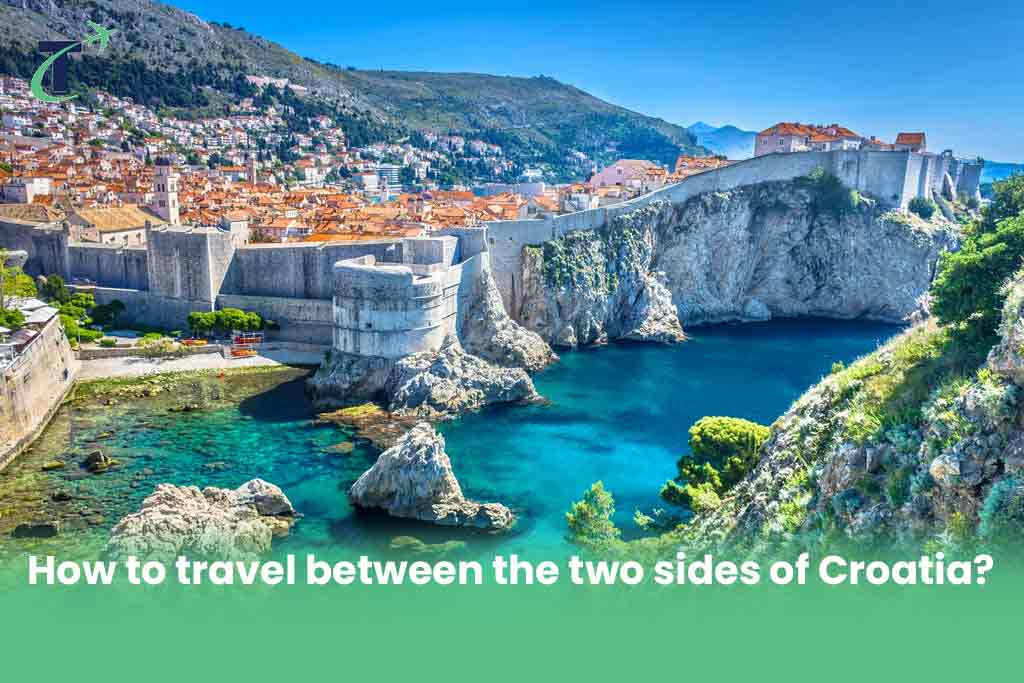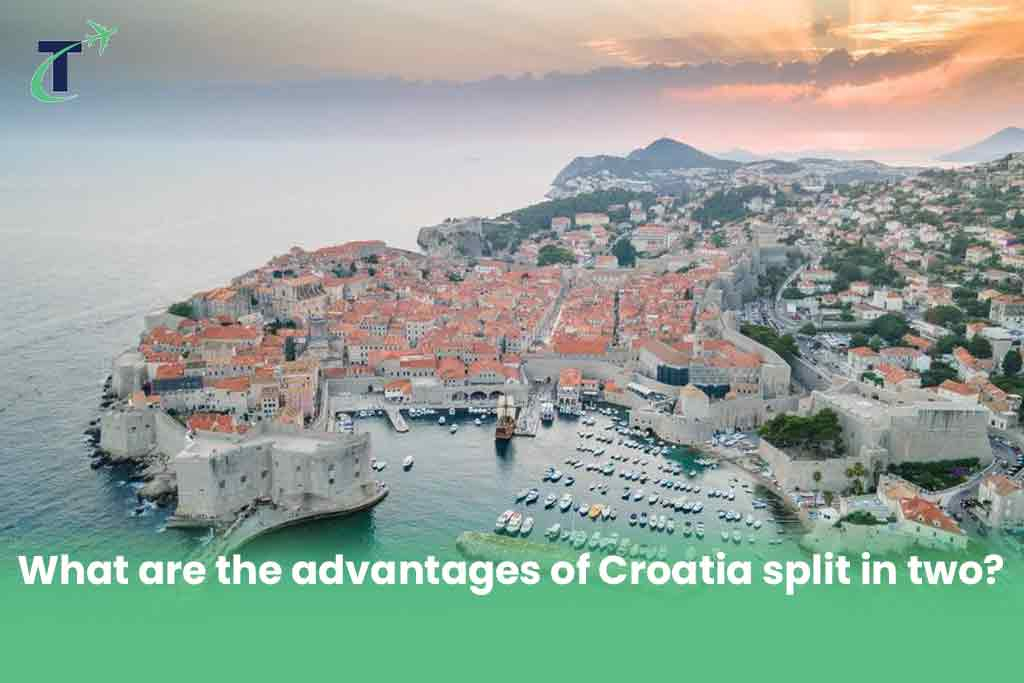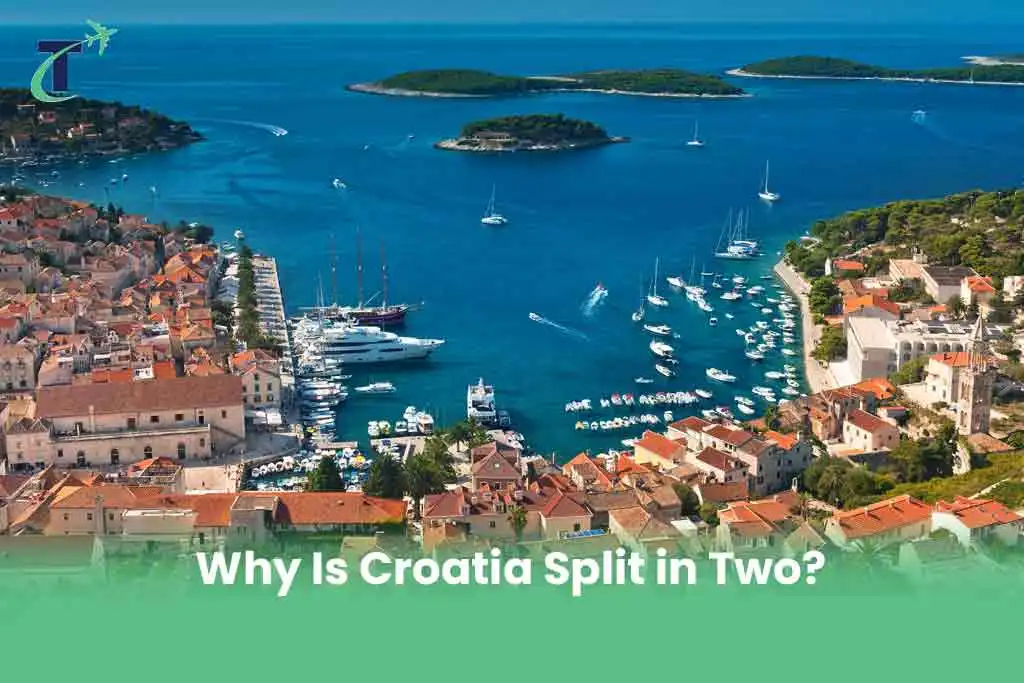In the realm of Westeros, where dragons rise, the fictional city of Meereen stands as a lantern of hope for the oppressed. But did you know that you can find its real-world counterpart along Croatia’s captivating coastline?
Croatia is a land of beauty and appealing history, and it boasts a coastline that juts out into the Adriatic Sea. Yet, this scenery is cut into two by a narrow strip of land that belongs to Bosnia and Herzegovina, splitting Croatia into two distinct parts.
This geographical anomaly is known and called the Neum Corridor. Croatia’s split coastline had roots in the past when empires clashed, and their borders were drawn again. It was an agreement called the Treaty of Karlowitz in 1699 that left Croatia with a coastline divided by a foreign land.
To find out more about the details of this historical event and wandering in older times, stay with us to read more about this geographical glitch, and the history behind it. Together, we will find out more about Bosnia and Herzegovina’s Neum corridor.
What is the historical reason for Croatia’s two parts?
Croatia is split into two regions, known as Croatia and Bosnia and Herzegovina. After the breakup of Yugoslavia in the 1990s, Croatia declared independence from this country, and the Croatia split took place afterward.
The independence war lasted for 4 years, from 1991 to 1995. Meanwhile, a large portion of the population in Bosnia and Herzegovina, which at that time was a part of Yugoslavia, declared its liberty as well. All these events led to the division of the country into two separate units.
The answer to “the historical reason for Croatia’s two parts” lies in the intricate tapestry of history, specifically the Treaty of Karlowitz, as mentioned in the introduction part.
What did the TreatyTreaty of Karlowitz do for Croatia divided in two?
The Treaty of Karlowitz was a significant peace agreement that ended the Great Turkish War (1683-1699) between Austria, Poland, Venice, and Russia on one side and the Ottoman Empire on the other side.
It marked a turning point in history, as it stopped the Ottoman Empire’s expansion into Europe and transferred the power to the European countries.
The Treaty had a significant impact on the history of Croatia, bringing an end to over 150 years of Ottoman rule. The Treaty’s key outcomes for Croatia were not only in ending the war, Economics, and Cultural Development, it affected the boarders as well.
Neum, Bosnia & Herzegovina!
The Neum Corridor, a thin strip of territory belonging to Bosnia and Herzegovina that divides the Croatian shoreline into two pieces, was one of the Treaty’s most significant effects.
The Republic of Ragusa (Dubrovnik) tried to safeguard itself against Venetian expansion by giving a small section of its land to the Ottomans, which resulted in this geographical arrangement.
The Neum Corridor has left an indelible mark on Croatia’s landscape and transportation infrastructure.
Individuals must pass through the Neum Corridor to travel between the two sides of Croatia, which causes logistical issues and disturbs the continuity of the Croatian coastline.
The corridor, on the other hand, has provided prospects for tourism and growth.
How to travel between the two sides of Croatia?

Croatia, a picturesque country nestled along the Adriatic Sea, is renowned for its stunning beaches, charming cities, and rich cultural heritage. However, its coastline is split into two, separated by a narrow strip of land belonging to Bosnia and Herzegovina.
You will need a valid passport to travel between the two sides of Croatia of land belonging to Bosnia and Herzegovina. This is because the Neum Corridor is an international border crossing.
Despite the time of being in Bosnia and Herzegovina, even if it is only one hour, you are still required to have a valid passport with you. This is because you are entering another country. If you are an EU citizen, you can also use your national ID card instead of a passport.
The effects on Croatia’s geography & Transportation
Croatia’s split in two has had a lasting impact on Croatia’s geography and transportation infrastructure.
To cross between the two parts of Croatia, passengers must go through the Neum Corridor, which is about 20 kilometers long and 1.5 kilometers wide at its narrowest point.
What are the advantages of Croatia split in two?

Croatia’s split coastline, while an anomaly, has become an integral part of its identity, shaping its history, geography, and cultural landscape.
Despite having some drawbacks in Croatia split in two, such as transportation disruption, trade barriers, and infrastructure limitations, Croatia can also benefit from this interruption, which we will discuss in this section:
· Tourism Potential
The first and most important advantage of Croatia split in two, is increasing the tourism industry in the region. The Neum Corridor has become a popular destination for tourists, and it attracts international visitors with its towns and historical attractions. This is a great source of revenue for both Croatia and Bosnia and Herzegovina’s economies.
· Development Opportunities
This historical corridor offers opportunities for joint development projects between Bosnia and Herzegovina and Croatia. Alliance on infrastructure and environmental initiatives can foster regional and economic growth.
· International Relations
The Neum Corridor serves as a bridge between these two beautiful countries, and it can promote cultural exchange, cooperation, and a close bond between the two countries, catering to strengthen regional stability and international cooperation.
These are the benefits of Croatia split in two for its people, and it provides lots of opportunities for locals to use these advantages.
Now, let’s move to the part that we all were waiting for.
· Game of Thrones Connection
Croatia’s split coastline has got extra attention due to its connection to the popular fantasy series “Game of Thrones” that HBO offered. The city of Dubrovnik, located within the Croatian exclave, was a filming location for King’s Landing, the fictional capital of Westeros.
Dubrovnik has great medieval architecture and a stunning coastal location, which the creators of this series perfectly captured and pictured in their essence of the series. So, this place is a popular destination for Game of Thrones enthusiasts.
The last curtain
Croatia, divided in two, with its split coastline, a historical coincidence, has become an integral part of this country’s identity.
This event has shaped the geography, Transportation, and cultural landscape of Croatia. The Neum Corridor, an artifact of past wars, now serves as a bridge between two nations, a haven for tourists, and a backdrop for extraordinary stories.
As Croatia continues to evolve and attract visitors, it is your turn to share your comments on this topic.
Do you find this historical event, Croatia split in two, attractive? How did you see the history of Croatia split in two? Do you think it benefits the local people, or is it just causing trouble for Transportation?
Please share your ideas with us in the comments.




